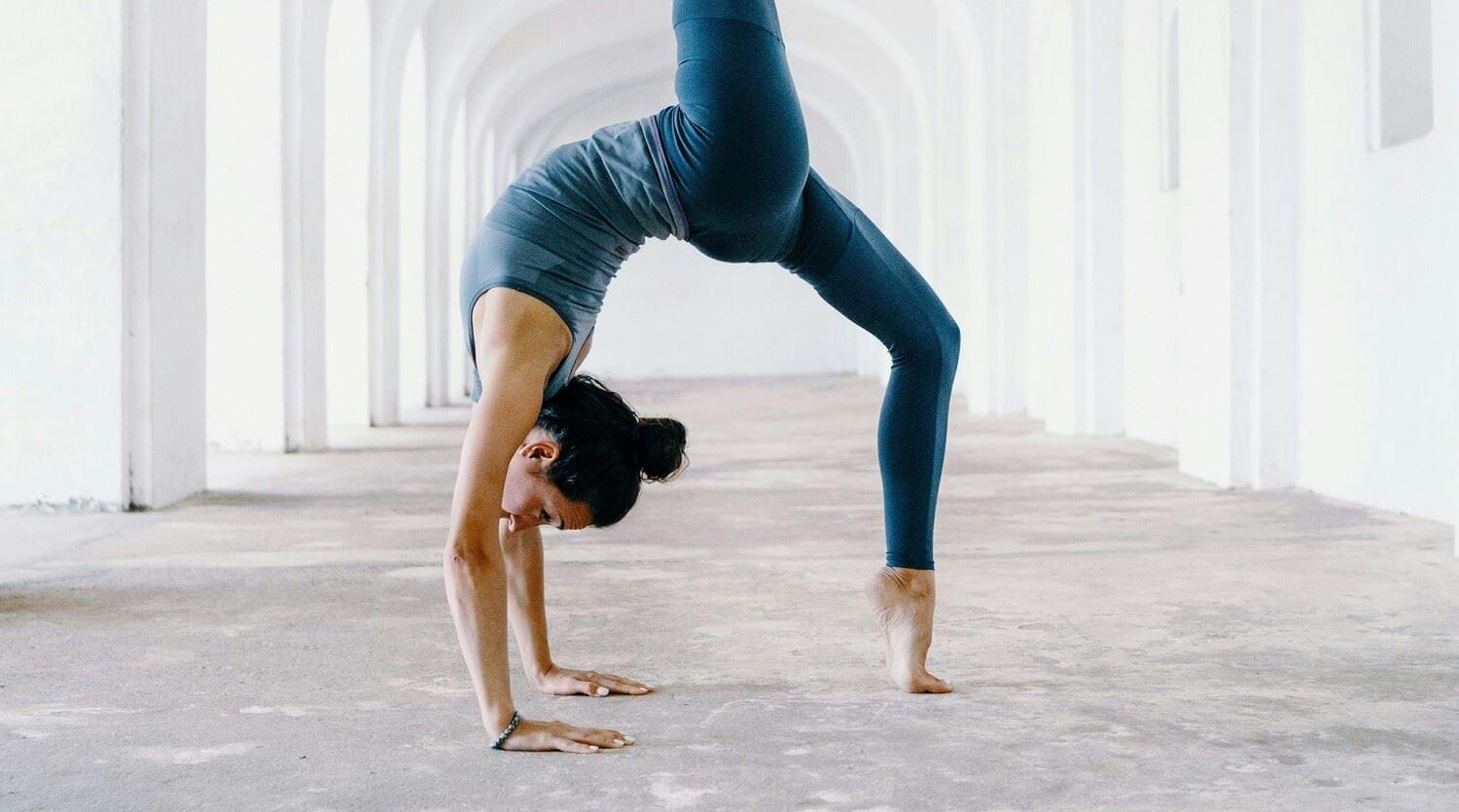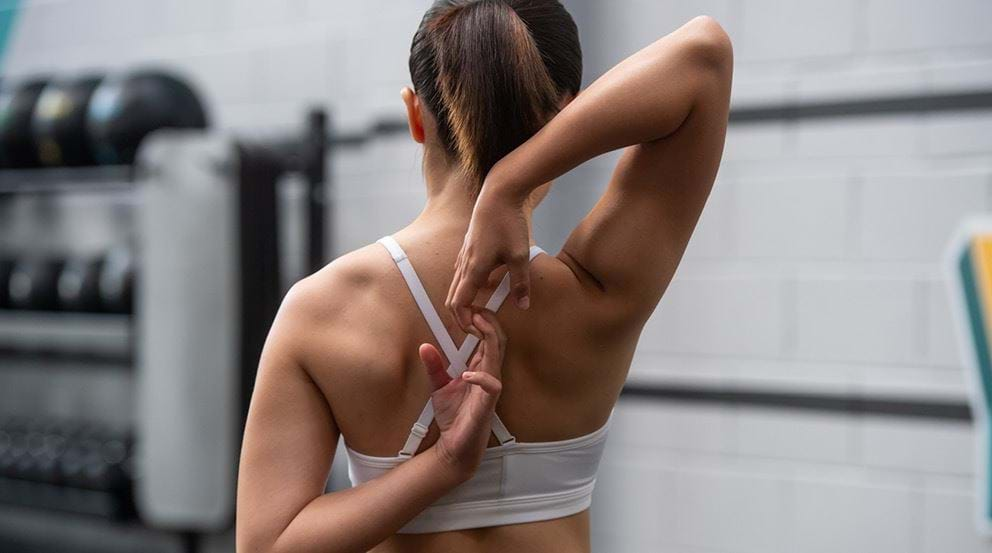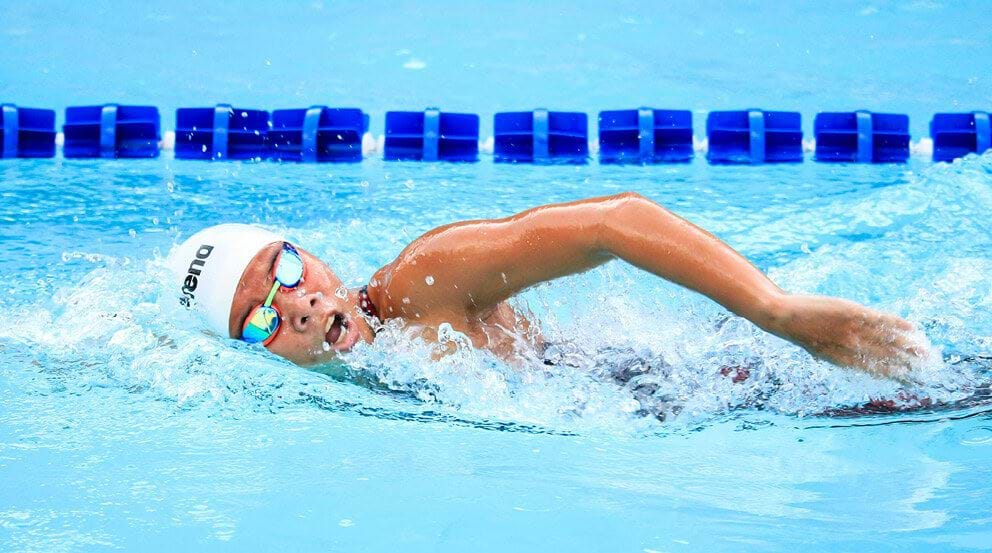A Beginner’s Guide To The Backbend And Its Benefits

What Are Backbends | How To | Benefits | Exercises | Variations
Are you ready to bend and stretch like never before? Whether you're a yoga pro or just getting started, backbends offer a rewarding and challenging way to boost flexibility, strengthen your core and improve your balance.
But don't worry, you don't need to be a human pretzel to reap the benefits! There's a range of variations of backbend that will still help boost your mobility, even if you're still working on your flexibility.
In this guide, we'll show you how to do a classic bridge backbend (also known as full wheel), as well as a range of other options you can try. We'll also explain all the fantastic benefits you can enjoy from practicing backbends.
What Is A Backbend?
Backbending refers to where the muscles in the back and glutes contract to arch your back, stretching the muscles on the front of the body, including the abdominals and chest. There are many types of backbends, each with different levels of strength and flexibility required. Some backbends target just the upper or lower back, and some work the entire posterior chain.
Backbends are popular in yoga, gymnastics, ice skating, and dance, but can benefit everyone. They are a fantastic way to improve flexibility while strengthening the muscles in your spine, shoulders, and core, and working on backbends can help to improve posture and lower back pain.
How To Do A Backbend: Step By Step Guide
One of the most popular types of backbend people try to do is a bridge, or wheel pose. This is a challenging backbend that requires good back, shoulder, and hip flexibility, and shoulder strength to push up into the pose.
If you struggle to get into bridge pose, start with less challenging backbends to build the strength and flexibility needed for this classic backbend.
Preparing for backbends:
Warming up is important for backbends, and any flexibility exercises, as muscles are able to stretch further when warm. After a short cardio warm up, perform dynamic and active stretches in the spine, shoulders, and hip flexors. Cat-cows, glute bridges, lunges, wrist circles, and cobras are great for preparing for bridge.
Steps To Perform A Backbend (Bridge Or Wheel Pose)
Start on your back:
Lie flat on your back with your knees bent and feet flat on the floor, hip-width apart, close to your glutes.
Position your hands:
Bring your hands up, bending your elbows and curling your arms to place your palms on the floor beside your head, fingers pointing toward your shoulders.
Engage your muscles:
Press through your feet and hands, engaging your glutes, legs, and core muscles.
Lift your hips:
Slowly lift your hips off the ground, pushing through your feet. Then, begin lifting your upper back and shoulders off the mat.
Push Up:
As you push your hips higher, press firmly into your hands to lift your upper body and head off the floor by straightening your arms. Push through your feet to bring your shoulders forward and engage your glutes to push your hips higher, creating an arch.
Hold the pose:
Once you're in the backbend, focus on breathing deeply. Keep your feet and hands grounded, your glutes engaged, and your spine long. Hold the position for a few breaths.
Coming down:
To safely exit, tuck your chin to your chest, bend your elbows, and slowly lower your body back to the mat, starting with your upper back, then middle, and finally your hips.
If you’re unable to lift your head off the mat, don’t worry – this can be common for people who haven’t trained backbends! Focus on strengthening the glutes and improving overhead shoulder flexibility and try again in a few weeks.
10 Benefits Of Backbends
Backbends aren’t just great for flexibility – they can boost mood, digestion, and overall fitness.
Here are 10 of the main benefits from perfecting your backbend:
Improves spine mobility:
Backbends help to improve spine flexibility and mobility by stretching the chest, abs, and hip flexors and strengthening the posterior chain. Practicing backbends also helps you learn how to engage the muscles to move the spine, giving you greater control of your movement.
Strengthens the back and core:
Backbends recruit muscles in the back, shoulders, and core, and improving your backbend requires you to build strength in these muscles.
Stretches tight hip flexors:
Backbends are a great way to stretch your hip flexors, muscles which are typically tight in people who sit down a lot. Improving hip flexor mobility helps with back pain.
Works the glutes and legs
Backbends don’t just work the back – many backbends strengthen the glutes and legs and help with learning how to engage the lower body muscles effectively.
Opens the chest and shoulders:
Backbends can counteract periods spent hunched over by stretching out the chest and shoulders.
Relieves stress, boosts energy, and improves focus:
Backbends are like a natural pick me up and can stimulate your nervous system, reduce stress, improve energy and focus, and increase energy. Some people find opening the chest can also release emotional tension and lift their mood.
Improves posture:
Regularly doing backbends can help to fix poor posture by reducing tightness in the chest, shoulders, and hip flexors, preventing the body from slumping forward.
Supports digestion and circulation:
Arching your back can help stimulate your digestive organs and improve circulation to your spine and other vital organs. It’s a win-win for your internal health.
Eases lower back pain:
Practicing backbends can help to ease lower back pain by strengthening and stretching the muscles around the spine, reducing muscular imbalances and increasing support.
Improves balance and coordination:
Backbends require a mix of strength and flexibility, which can really improve your balance and body awareness over time.
Backbend Drills And Stretches For Beginners
There are different types of backbends, each with varying intensity and focus and ranging from gentle stretches to deep, advanced poses. Working through these exercises can help to build the strength, flexibility, and endurance needed to progress to more advanced backbends.
In this video, we’ll take you through five different backbending poses that can be completed as a warm up, working up to a full bridge-style backbend. There are more details about each below.
Cat Cow Pose (Marjaryasana-Bitilasana)
Intensity: Gentle
A flowing combination of two poses, performed on all fours. Round your back toward the ceiling while tucking your chin to your chest for cat pose. In cow Pose, you arch your back and lift your head and tailbone upward. This sequence helps warm up the spine and improve flexibility.
Key Focus: Spinal mobility, core engagement, and back stretching.
Camel Pose (Ustrasana)
Intensity: Moderate to Intense
In this kneeling backbend, you reach your hands back to your heels, pushing your chest and hips forward.
Key Focus: Chest, hip flexors, and thighs.
Superman Pose (Viparita Shalabhasana)
Intensity: Gentle to Moderate
Lying face down, you extend your arms and legs while simultaneously lifting both off the ground, creating an arch shape with your back.
Key Focus: Lower back, glutes, and hamstrings.
Bow Pose (Dhanurasana)
Intensity: Moderate to Intense
Lying on your stomach, bend your knees and reach your hands back to grab your ankles. As you lift your chest and thighs off the floor, you create a bow shape.
Key Focus: Chest, quads, and spine.
Glute Bridge (Setu Bandhasana)
Intensity: Gentle to Moderate
Lying on your back with your knees bent and arms by your sides, lift your hips off the ground while lying on your back.
Key Focus: Hip flexors, chest, and lower back.
Yoga Backbends: Other Key Poses And Techniques
Looking for even more backbend poses to try? These examples will take you through a range of intensities and give a range of different benefits. While yoga fans love these exercises, anyone can give them a try - just start with the gentler movements and work your way up in intensity, gradually over time.
Cobra Pose (Bhujangasana)
Intensity: Gentle
In cobra pose, you lie face down with your arms by your side. Lift your chest while keeping your pelvis grounded. Hold before easing back down. This is great for beginners and helps in opening the chest and spine.
Key Focus: Upper back and chest.
Child's Pose:
Intensity: Gentle
A resting pose. Starting on all fours in tabletop, drop your bottom back onto your heels and extend your arms forward, lowering your chest towards the ground. Keep your back curved and enjoy the stretch. It gently stretches the lower back, hips, and shoulders while calming the mind.
Key Focus: Lower back, hips, and shoulders.
Puppy Pose (Uttana Shishosana)
Intensity: Gentle
A gentle backbend that stretches the upper back, shoulders, and chest. Start on all fours, walk your hands forward, and lower your chest toward the ground while keeping your hips elevated. You should have an arch along your back as you rest your head down.
Key Focus: Upper back, shoulders, and chest.
Locust Pose (Salabhasana)
Intensity: Gentle to Moderate
Lying face down with your core engaged, lift your chest, arms, and legs off the floor, keeping your arms alongside your body. This strengthens the lower back and glutes.
Key Focus: Lower back, glutes, and hamstrings.
Fish Pose (Matsyasana)
Intensity: Gentle to Moderate
This is a reclining backbend. Lie on your back with your legs straight and your arms by your side. Pressing into your forearms, Lift your chest toward the ceiling and rest the crown of your head on the mat.
Key Focus: Chest, upper back, and neck.
Upward-Facing Dog (Urdhva Mukha Svanasana)
Intensity: Moderate
This is similar to a cobra pose, with elements of a press up to make this more intense. Starting face down, press into your hands to lift your chest, hips and thighs upwards. You should have a deep bend in your lower back.
Key Focus: Chest, shoulders, and spine.
Dancer's Pose (Natarajasana)
Intensity: Moderate to Intense
A deep, balancing backbend that needs a lot of focus and patience. Stand on one leg with your knee gently bent. Holding the foot of the opposite foot behind you, lift your chest forward as you kick the leg back, creating an elegant backbend. Reach forward with the opposite hand for balance.
Key Focus: Chest, shoulders, and hip flexors.
King Pigeon Pose (Kapotasana Prep)
Intensity: Intense
This is a deep backbend performed from a low lunge position, with one foot forward and the opposite knee on the ground. Slide the forward foot towards the opposite hand while dropping your hip as you would with pigeon pose, until your thigh rests on the floor. Lift your chest, arch your back and grab the foot or ankle behind you.
Key Focus: Chest, shoulders, and hip flexors.
Ready to bend over backwards? Whether you're aiming for a gentle stretch or a gravity-defying arch, backbends can add a whole new dimension to your practice. So roll out your mat, take a deep breath, and start bending your way to feeling stronger, more flexible, and energised.
But backbends are just one option for improving fitness through stretching. We cover more in our improving mobility and flexibility hub. Use this alongside a cardio and strength training program for the best results. Find a PureGym near you today and make the most of our high-quality gym equipment. Or sign up with one of our expert personal trainers for some professional guidance.


